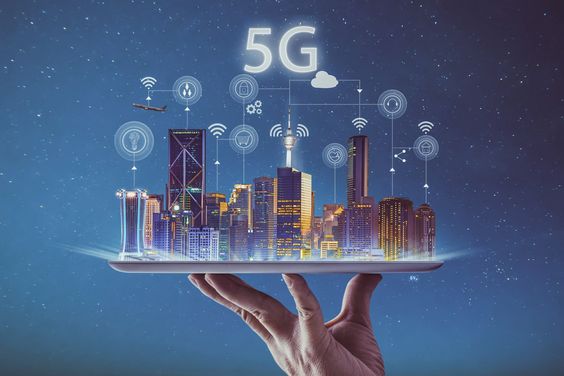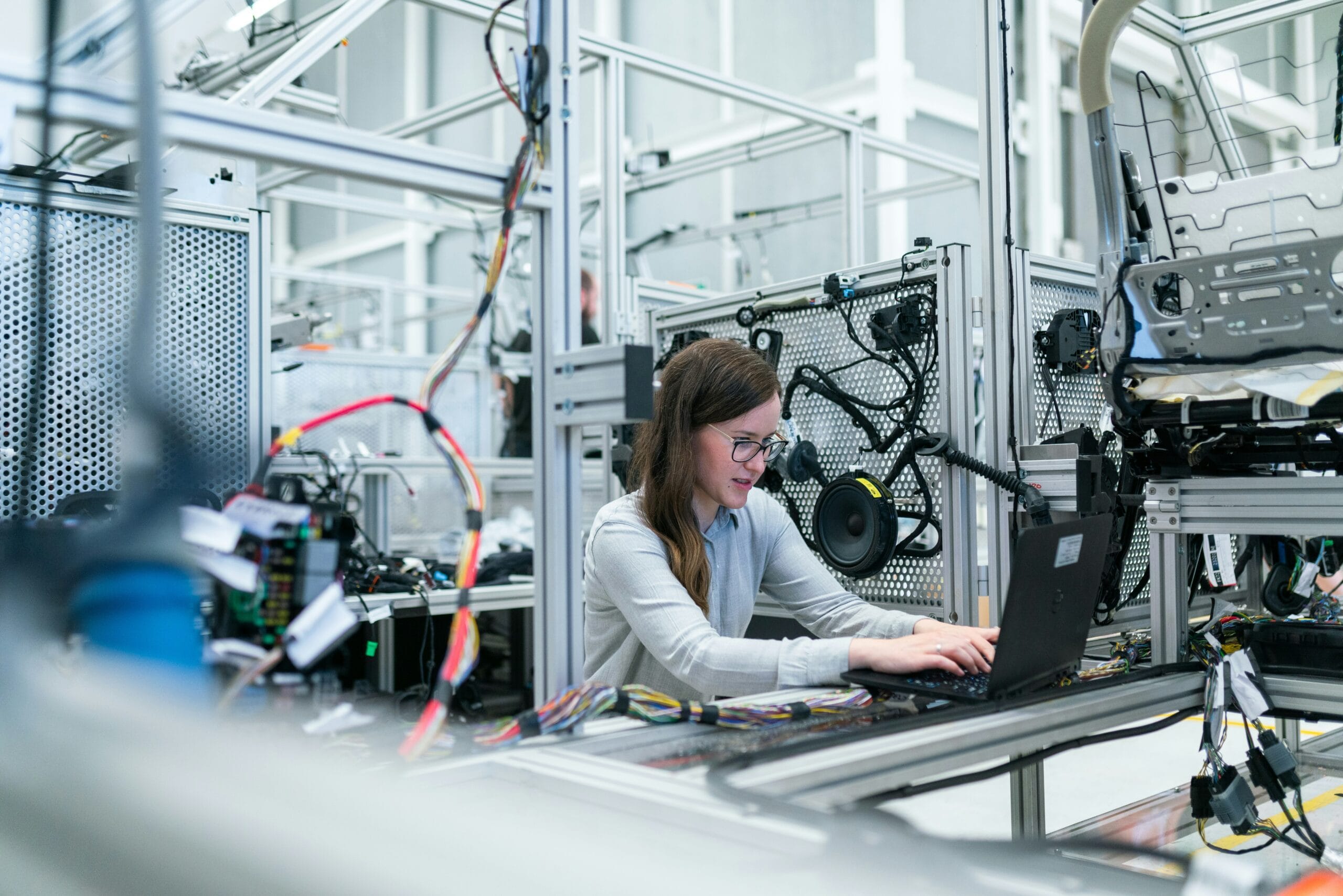How 5G Networks Will Drive the Next Wave of IoT Innovations

The arrival of 5G technology is set to revolutionize many industries, but perhaps none more so than the Internet of Things (IoT). This next-generation wireless technology is expected to significantly expand the possibilities for IoT devices, enabling faster speeds, lower latency, and the ability to connect billions of devices simultaneously. In this article, we’ll explore how 5G networks will drive the next wave of IoT innovations and examine the 5G technology impact on IoT across various sectors.
The Rise of 5G: A Game-Changer for IoT
Fifth-generation wireless technology (5G) brings with it remarkable improvements in terms of bandwidth, latency, and connection density. Unlike its predecessors, 5G isn’t just an incremental update; it’s a leap forward that opens the door to new possibilities for IoT. With speeds up to 100 times faster than 4G and a latency reduced to milliseconds, 5G is poised to unlock unprecedented opportunities in the IoT landscape.
Increased Device Connectivity
5G’s ability to support up to 1 million devices per square kilometer enables a vast expansion in IoT infrastructure. This opens up enormous potential for smart cities, connected homes, autonomous vehicles, and industrial IoT applications. The capacity to connect so many devices simultaneously is a game-changer for industries that rely heavily on interconnected systems.
Ultra-Low Latency
One of the most significant advantages of 5G is its ultra-low latency—response times between devices will be as fast as 1 millisecond. This is crucial for time-sensitive IoT applications, such as autonomous vehicles, robotic surgeries, and industrial automation, where split-second decisions can make all the difference.
Greater Bandwidth
5G offers dramatically increased data throughput, making it easier to transmit large volumes of data from IoT devices to the cloud and back in real-time. This is essential for devices like security cameras, augmented reality (AR) headsets, and connected wearables that generate and consume massive amounts of data.
How 5G Technology Will Drive IoT Innovations Across Sectors
The 5G technology impact on IoT will be felt across numerous industries, fueling the next wave of innovations. Let’s take a closer look at how 5G is transforming various sectors:
Smart Cities
The concept of smart cities has long been linked to IoT, but the introduction of 5G will truly bring these futuristic urban landscapes to life. Cities will be able to deploy smart traffic lights, connected waste management systems, and intelligent surveillance networks, all working together seamlessly. Thanks to 5G’s ability to support more devices with low power consumption, municipal governments can leverage IoT for real-time data collection, predictive maintenance, and efficient public service delivery.
For example, 5G-enabled sensors can monitor air quality, traffic patterns, and energy usage, helping cities reduce their carbon footprints. With lower latency, IoT-based smart transportation systems will become more responsive, improving traffic flow and reducing accidents.
Healthcare
The 5G technology impact on IoT in healthcare will enable telemedicine, remote patient monitoring, and even robotic surgeries to reach new heights. Devices that monitor patients’ vital signs in real-time will provide more accurate data, and doctors will be able to make decisions instantly based on real-time analytics. Furthermore, wearable devices that track health metrics such as heart rate, blood pressure, and glucose levels can send data to healthcare providers with virtually no delay, improving patient outcomes.
Robotic-Assisted Surgeries
Robotic-assisted surgeries will become more precise and safer as 5G’s low-latency connections allow for seamless communication between devices. This will enable surgeries to be performed remotely with a level of precision that was previously unattainable with 4G networks.
Manufacturing and Industrial IoT (IIoT)
5G is set to revolutionize manufacturing by driving innovations in the Industrial Internet of Things (IIoT). Factories equipped with 5G-enabled sensors can monitor machines in real-time, predicting failures before they occur and scheduling maintenance proactively. The 5G technology impact on IoT in this sector will also allow for autonomous robots, smart logistics, and enhanced production efficiency.
Perform Complex Tasks
For instance, factories can deploy 5G-connected robots to perform complex tasks, from assembling products to packaging them for shipment. With real-time communication between devices, production lines will become more efficient, reducing downtime and increasing output.
Autonomous Vehicles and Transportation

The future of transportation is autonomous, and 5G will play a pivotal role in making self-driving cars a reality. The 5G technology impact on IoT will be particularly evident in vehicle-to-vehicle (V2V) and vehicle-to-infrastructure (V2I) communication, where cars will need to exchange massive amounts of data with each other and with road infrastructure in real-time.
IoT Sensors
Self-driving cars equipped with IoT sensors will be able to communicate with traffic signals, nearby vehicles, and even pedestrians via connected devices. This high-speed communication will be critical for collision avoidance, route optimization, and overall safety. In addition to road transportation, 5G will enable the creation of smart airports and ports, where IoT devices manage the movement of goods and people with unprecedented efficiency.
Agriculture
In the agricultural sector, the 5G technology impact on IoT will allow farmers to harness the power of precision farming. With 5G-enabled IoT sensors monitoring soil moisture, crop health, and weather conditions in real-time, farmers can make data-driven decisions to optimize yield and reduce waste.
For example, drones equipped with 5G-connected sensors can survey large agricultural fields, identifying areas that need watering, fertilizing, or pest control. Autonomous tractors and harvesters will also communicate seamlessly with IoT devices to perform tasks more efficiently, improving overall productivity.
The Challenges of 5G and IoT Integration
While the 5G technology impact on IoT is vast, the integration of these two technologies does present some challenges. Infrastructure costs for deploying 5G networks are substantial, and many rural areas may lag behind in adopting this new technology. Additionally, the increased number of IoT devices introduces concerns around security and privacy, as more connected devices mean more potential points for cyberattacks.
Furthermore, 5G’s high-frequency signals have shorter ranges compared to 4G, requiring more cell towers to provide consistent coverage. This infrastructure rollout is time-consuming and expensive, which could delay widespread adoption in some regions.
Conclusion
The 5G technology impact on IoT will drive innovations across nearly every industry, creating smarter, more connected systems than ever before. From healthcare to transportation to agriculture, the ultra-fast speeds, low latency, and massive device connectivity of 5G will open up new possibilities for IoT applications that were unimaginable with previous network generations.




